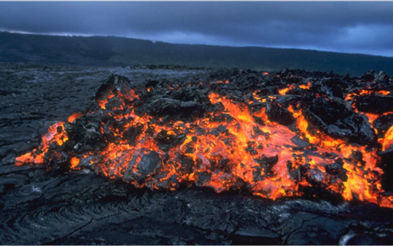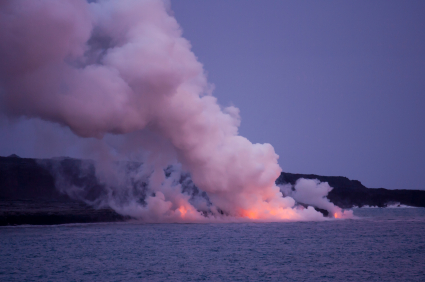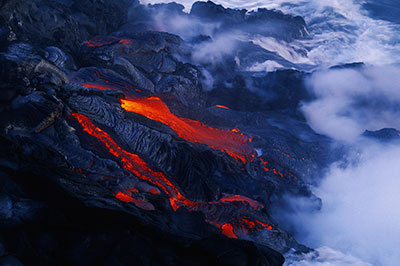-
WHAT IS NASA PHYSICS?
-
MODULES
-
Forces and Motion
-
Conservation of Momentum & Energy
-
Temperature and Heat
-
Fluids
-
Optics
-
Electromagnetic Spectrum
-
Modern Physics
-
Anticipation Guide 7
-
Intro to Modern Physics
-
Blackbody Radiation
-
The Ultraviolet Catastrophe
-
The Photoelectric Effect
-
Bohr's Atom
-
Spectra
-
Radioactive Decay
-
Special Relativity (SR)
-
Simultaneity
-
Distance and Time
-
General Relativity
-
May the Forces be with You
-
Modern Physics Notebook
-
Assessment Problems 7
-
-
Useful Things
-
-
SITE MAP
Temperature and Heat
-
Anticipation Guide
-
Thermal Energy
-
Measuring Temperature
-
Heat Expansion
-
Heat
-
Heat Capacity
-
Change of State
-
Transferring Heat
-
Greenhouse Effect
-
Notebook
-
Assessment Problems
Heat =
movement of thermal energy
CAUTION: This calorie is not the same one that dieters are concerned with, although they are related. When talking about the amount of energy in food the word calorie actually means 1000 calories as defined here, or a kilocalorie. Usually the context of a statement lets you know whether a physicist’s calorie or a dieter’s calories is meant. Although if you are talking to a chubby physicist at a gym there may be some confusion.
Internal energy
Internal energy describes the total amount of energy in a material. Temperature is a measure of the average amount of kinetic energy. Think of these two quantities as how much and how fast.
Heat
 Lava flow in Hawaii; image from US Geological SurveyIf 100 grams of cold water (T = 5°C) are mixed with an equal amount of hot water (T = 85°C), what will happen? Everyone knows the answer, the two liquids will mix and come to thermal equilibrium at an intermediate temperature, in fact, it will be half way between the two, or 45°C (half the difference is 40°F added to the lower temperature of 5°C.). That results because when rapidly moving molecules collide with slow ones they speed the slow ones up, and lose energy themselves. After trillions of collisions – in a few minutes – all of the molecules move at nearly the same speed.
Lava flow in Hawaii; image from US Geological SurveyIf 100 grams of cold water (T = 5°C) are mixed with an equal amount of hot water (T = 85°C), what will happen? Everyone knows the answer, the two liquids will mix and come to thermal equilibrium at an intermediate temperature, in fact, it will be half way between the two, or 45°C (half the difference is 40°F added to the lower temperature of 5°C.). That results because when rapidly moving molecules collide with slow ones they speed the slow ones up, and lose energy themselves. After trillions of collisions – in a few minutes – all of the molecules move at nearly the same speed.
Thermal energy only flows from the hot towards the cold. The movement of thermal energy is called heat. A cup of hot coffee does not contain heat, but when the coffee touches the inside of your mouth the flow of energy from the hot coffee is heat. The coffee has internal energy, and when it transfers to another object the flow is heat. The amount of heat that flows depends on two things, the temperature difference between two objects, and their masses. Above: Eruption, Hawaii; image © MichaelStubblefield - istockphoto.com A red-hot thumbtack dropped in a bucket of cold water will cause the water immediately around it to sizzle and become much warmer but the temperature of the entire bucketful of water will hardly change. But if a thousand hot thumbtacks were dropped in, the water temperature would significantly rise, perhaps enough to evaporate.
A red-hot thumbtack dropped in a bucket of cold water will cause the water immediately around it to sizzle and become much warmer but the temperature of the entire bucketful of water will hardly change. But if a thousand hot thumbtacks were dropped in, the water temperature would significantly rise, perhaps enough to evaporate.
Physics has a way – of course - to measure how much temperature rises when heat is added.
Definition: A calorie is defined as the amount of heat which when added to 1 gram of water increases the water’s temperature by 1 Celsius degree.
This statement defines the relation between mass, temperature and heat, with reference to a specific material, water. A calorie is a unit of energy, just as a meter is a unit of length.
Above: Lava flow in Hawaii flowing into ocean; Image © SeppFriedhuber - istockphoto.com When hot lava flows into a 1000 kg (= 1000 * 1000 g) pond of water, the pond quickly warms by 80 C° and so the amount of heat added to the water is 1000*1000*80 = 80 million calories!
When hot lava flows into a 1000 kg (= 1000 * 1000 g) pond of water, the pond quickly warms by 80 C° and so the amount of heat added to the water is 1000*1000*80 = 80 million calories!
© 2013 by Wheeling Jesuit University/Center for Educational Technologies®. 316 Washington Ave., Wheeling, WV 26003-6243. All rights reserved. Privacy Policy and Terms of Use.

